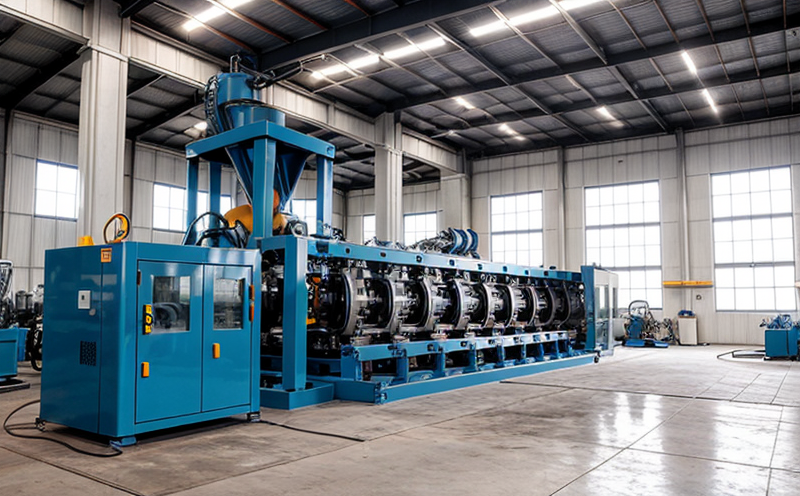ASTM E399 Fracture Toughness Performance Testing of Equipment
The ASTM E399 standard provides a comprehensive framework for determining the fracture toughness (KIc) of metallic materials used in machinery and equipment. This property is crucial for assessing the resistance to brittle fracture under stress, which is particularly important in industrial manufacturing environments where high-stress applications are common.
The ASTM E399 test involves subjecting a specified specimen to controlled loading conditions that induce crack growth from a pre-cratered notch. The primary objective is to measure the energy required for the crack to propagate through the material, which reflects its fracture toughness. This measurement is vital in ensuring that equipment can withstand operational stresses without catastrophic failure.
Fracture toughness testing is often required during product development stages to identify potential design flaws or material weaknesses. It helps manufacturers make informed decisions about material selection and process optimization. In procurement processes, this test ensures the quality of purchased components by validating their compliance with specified fracture toughness values.
The ASTM E399 method is applicable across various sectors including aerospace, automotive, construction, and manufacturing industries where critical machinery is involved. By ensuring that equipment meets the required standards for fracture toughness, these tests contribute significantly to enhancing safety and reliability in operations.
For R&D engineers, conducting ASTM E399 tests allows them to innovate with confidence, knowing they can rely on accurate data from standardized procedures. Quality managers benefit by having consistent quality assurance metrics that reflect real-world stress conditions. Compliance officers gain peace of mind knowing their processes comply with international standards.
Applied Standards
The ASTM E399 standard is part of a broader set of guidelines designed to ensure the reliability and accuracy of mechanical property tests for metallic materials. It aligns closely with other relevant standards such as ISO 14576, which covers similar aspects but may have different focus areas depending on specific application needs.
When performing ASTM E399 testing, it is essential to adhere strictly to the specified procedures outlined in the standard document. Non-compliance could lead to inaccurate results that do not accurately represent the true fracture toughness of the material being tested.
- Adherence to specimen preparation requirements
- Controlled environmental conditions during testing
- Calibration and validation of test equipment
The application of these standards ensures consistent results across different laboratories, promoting trust in laboratory reports among stakeholders.
Scope and Methodology
The scope of ASTM E399 encompasses the mechanical testing of metallic materials used in various types of machinery and equipment. The primary focus is on evaluating the fracture toughness (KIc) of these materials under controlled loading conditions that mimic real-world stress environments.
Key components of the methodology include:
Specimen Preparation:
- Cutting the specimen to standard dimensions and tolerances
- Cratering the specimen accurately using specified tools and techniques
- Ensuring cleanliness and free from external stress raisers
Test Setup:
- Selecting appropriate test machines capable of applying precise loads
- Mounting the specimen in a manner that prevents deformation not related to crack propagation
- Ensuring proper alignment and calibration of all equipment involved
Data Collection:
- Recording load versus displacement data throughout the test
- Analyzing the fracture surface using optical or scanning electron microscopy (SEM)
- Calculating KIc based on crack growth behavior and energy absorption during testing
The entire process is meticulously documented to provide a comprehensive record of each test.





